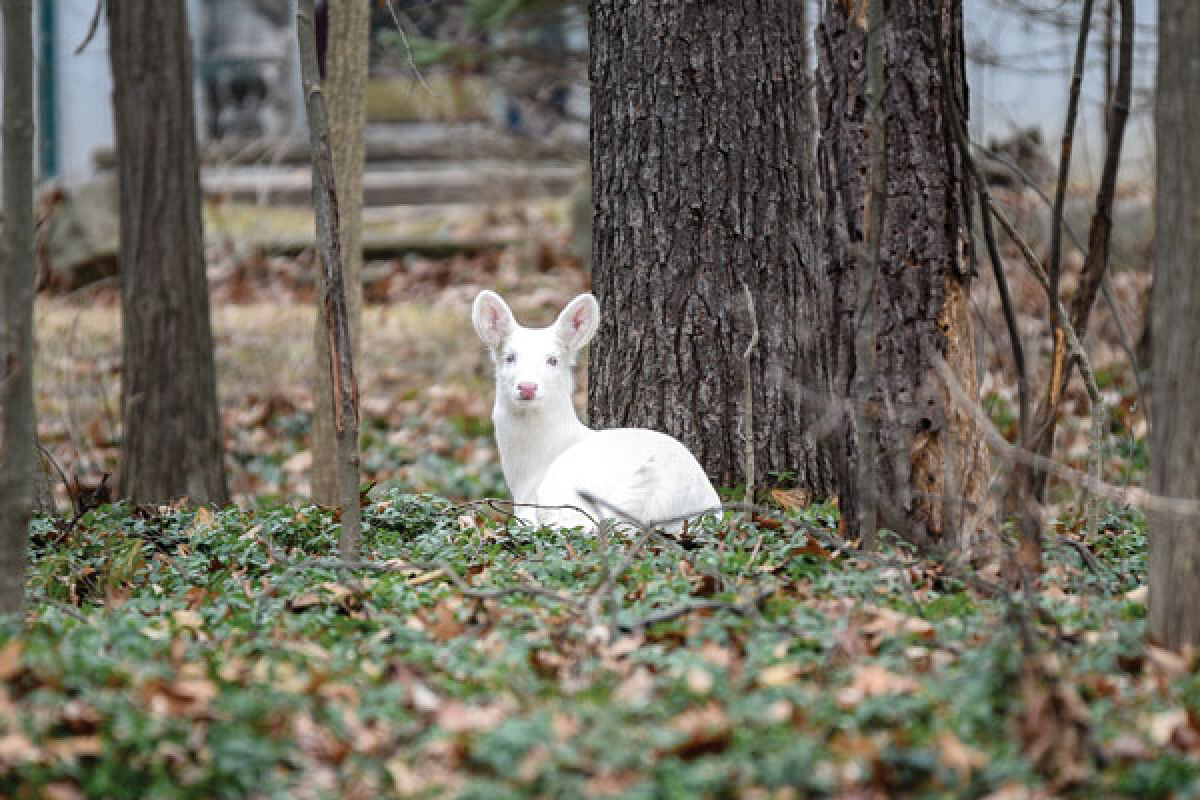METRO DETROIT — Donald Payne has seen many white-tailed deer pass through his Farmington Hills yard. The lanky ruminants are a common sight around the region, but one recent visitor stands out from the rest with its stark white fur.
“It’s exciting. … It’s a once-in-a-lifetime thing,” Payne said of seeing the deer. “You’ve got to appreciate the time you have when you’re blessed with a rarity like that coming into your yard to say hello.”
Payne is not the only one that’s spotted white-furred white-tails in the region. Sightings of deer with the rare fur date back to at least 2022 in Troy with subsequent sightings in Bloomfield Hills and Farmington Hills. According to Rochester Hills naturalist Lance DeVoe, white fur in deer is a symptom of either albinism or piebaldism, which respectively have about a 1/30,000 and 1/1,000 chance of occurring.
“It’s a recessive genetic trait,” DeVoe said. “It’s a thing where (white fur is) selected against because of the fact they lack the camouflage.”
Sightings of deer are common throughout southeastern Michigan. What was once a rare glimpse into nature has become a daily occurrence in some areas as white-tailed deer have made their homes between ever-growing housing developments.
“With everything being so developed and big subdivisions bordering each other and a really small of what would be considered suitable deer habitat, they’re forced to be in neighborhoods and commons areas and every little woodlot,” DeVoe said. “You can see a deer any day of the week anywhere in (Rochester Hills) and pretty much all over southeast Michigan.”
The loss of habitat has led to behavioral changes in deer. DeVoe says fawns will be left in yards and common areas since humans keep predators like coyotes at bay. It has allowed the deer population to become a regular part of living in the region. The sight of deer is hardly an issue, but homeowners and drivers can have encounters with deer ranging from the inconveniences — deer tend to eat from gardens and planted fruit trees alongside native plants — to dire road hazards.
While living with deer can be challenging at times, DeVoe says the role of influence the four-legged neighbors have on residents tends to align with how important the local environment is for deer.
“If you live in an area where you have a big commons area and there’s a lot of natural food, like oak trees, then they’re not as persistent as they are when those things don’t exist,” DeVoe said.
In areas where deer lack natural food, the animals turn to garden plants. Deer can be deterred from dining in gardens through the use of physical barriers like nets and fences, applying repellents to plants or by planting flowers that deer do not like, such as hyacinth, sage or coneflower. Hazing deer by making loud noises or using noise-emitting devices to keep deer away also helps.
But no matter the tactics used to keep deer away from lawns and flowers, DeVoe says the white-tailed deer are not leaving their homes anytime soon. Humans, it seems, have come to accept this.
“I get fewer complaints (about deer) now than at any time that I’ve had this job, which is over 30 years,” DeVoe said. “I think people have adjusted to living with them and knowing that they’re going to be around and that sometimes there’s going to be a negative impact from them. But at the same time, there’s a lot of people where that’s why they enjoy living here, seeing the wildlife and having those opportunities. It’s a perspective thing, and I think people are becoming more realistic with living with them.”
 Publication select ▼
Publication select ▼























